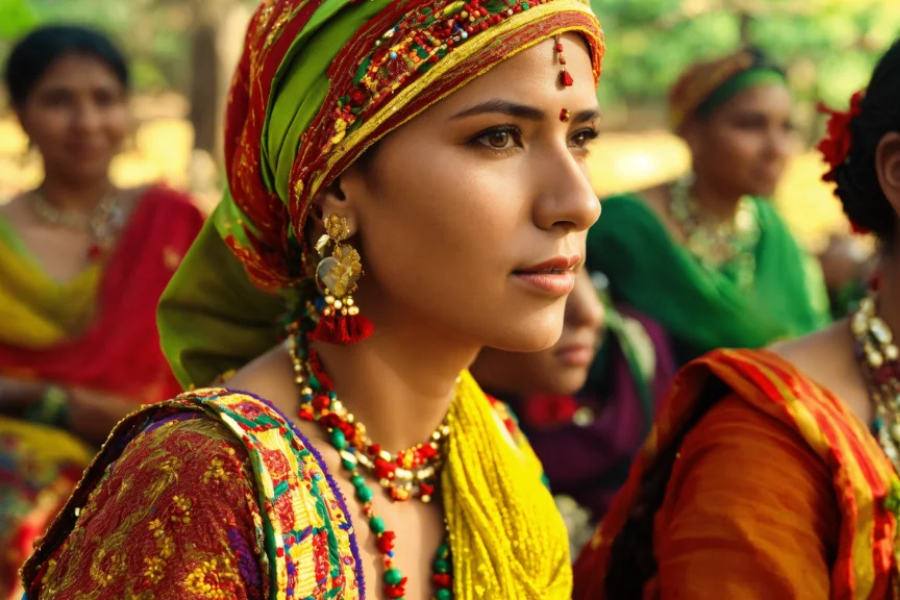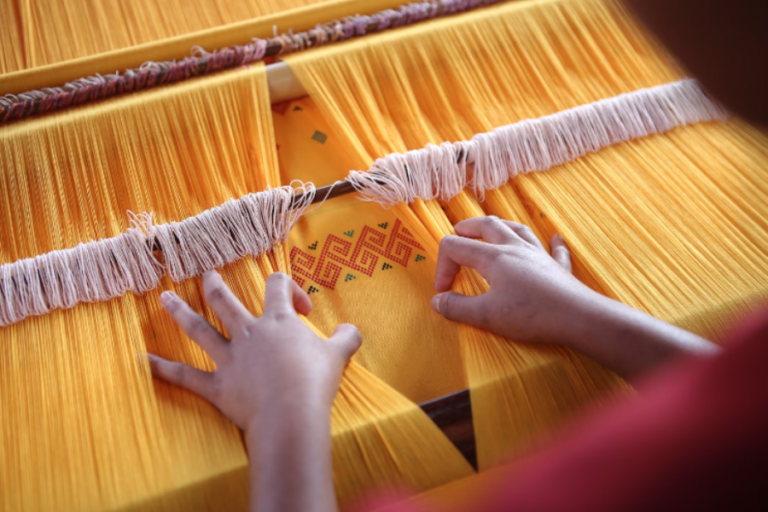“From Mountains to Deserts: The Diverse Landscapes of the Amaziğ People”
Introduction to the Amaziğ
Definition and Ancestry
The Amaziğ, often referred to as the Berber people, are an indigenous ethnic group rooted in North Africa. Their origins can be traced back thousands of years to the earliest inhabitants of the region. The term “Amaziğ” translates to “free people” in the ancient Berber language, embodying their long-standing traditions of independence and self-governance.
Cultural Significance
Renowned for their rich heritage, the Amaziğ culture is characterized by vibrant traditions, a diverse linguistic landscape, and unique customs. Despite enduring centuries of cultural assimilation and outside influences, the Amaziğ have preserved a strong sense of identity and pride in their heritage, making substantial contributions to the cultural fabric of North Africa and beyond.
Historical Context
Ancient Heritage
The history of the Amaziğ dates back to ancient times, with archaeological evidence indicating their presence in North Africa during prehistoric periods. Considered one of the oldest indigenous groups in the region, their civilization thrived through the ages, including notable cultures like the Numidians and the Garamantes, which significantly influenced the area’s cultural identity.
Cultural Interactions
Throughout their history, the Amaziğ have engaged with various civilizations, including the Phoenicians, Romans, Arabs, and Europeans. These interactions fostered cultural exchanges and trade networks, allowing foreign influences to permeate Amaziğ society. Nevertheless, they have managed to retain their cultural distinctiveness and resilience in the face of external pressures.
Major Historical Milestones
The Amaziğ people’s history is punctuated by key events, including conquests, resistance movements, and cultural revitalization efforts. Their journey has been marked by conflicts with invaders and ongoing struggles for recognition and autonomy, shaped by colonization and socio-political turmoil.
Geography and Distribution
Habitats of the Amaziğ
The Amaziğ primarily inhabit North Africa, with notable populations in Morocco, Algeria, Tunisia, Libya, and Mauritania. They occupy a variety of geographical settings, including mountains, desert oases, and coastal regions, each contributing to their unique cultural and linguistic identities.
Population Insights
Population estimates for the Amaziğ vary widely, with figures suggesting tens of millions spread across North Africa and its diaspora. In addition to their rural presence, many Amaziğ have migrated to urban centers seeking economic opportunities, adding to the cultural diversity of cities throughout the region.
Landscapes and Lifestyles
The geographic variety of North Africa has significantly influenced the lifestyle and livelihoods of the Amaziğ. From the towering Atlas Mountains to the vast Sahara Desert, their communities have adapted to different environments, engaging in agriculture, pastoralism, and trade based on available resources.
Linguistic Diversity
Overview of the Amaziğ Language
The Amaziğ language, known as Tamaziɣt, belongs to the Afro-Asiatic language family and features numerous dialects and variations spoken throughout North Africa. Its unique script, Tifinagh, has ancient origins and is officially recognized in several countries.
Dialectical Variations
Tamaziɣt exhibits considerable linguistic diversity, with distinct dialects and variations reflecting the regional influences and historical interactions of different Amaziğ communities. These dialects vary in terms of pronunciation, vocabulary, and grammatical structures.
Language as a Cultural Anchor
Language is central to Amaziğ identity and cultural preservation, serving as a medium for oral traditions, literature, and knowledge transfer between generations. Initiatives to promote Amaziğ language education and literacy have been crucial in revitalizing indigenous languages and fostering a sense of pride among speakers.
Cultural Traditions and Practices
Festivals and Celebrations
The Amaziğ celebrate a rich tapestry of festivals and cultural events throughout the year, each infused with meaning and tradition. These festivities often align with agricultural cycles, religious events, or historical commemorations, bringing communities together for music, dance, and feasting.
Culinary Heritage
Amaziğ cuisine showcases the diverse culinary traditions of North Africa, blending Berber, Arab, and Mediterranean influences. Staples include couscous, tagine, and various flatbreads, prepared with locally sourced ingredients such as grains, legumes, vegetables, and meats, all seasoned with traditional spices.
Traditional Attire
Traditional Amaziğ clothing varies according to geography, climate, and cultural practices. In rural areas, distinctive garments like djellabas, haiks, and kaftans are commonly worn, often embellished with intricate embroidery or jewelry that signifies cultural identity and social status.
Spiritual Beliefs and Practices
Spiritual Traditions
The Amaziğ religious landscape is diverse, encompassing a range of beliefs and practices. While Islam is the predominant faith, especially in urban areas, rural communities often retain traditional animist beliefs, incorporating elements of ancestor veneration and nature worship into their spiritual lives.
Religious Diversity
In addition to Islam and indigenous animist traditions, some Amaziğ communities may practice Christianity or follow syncretic forms of spirituality that merge various religious elements. This religious diversity reflects the historical interactions that have shaped Amaziğ society over centuries.
Religion’s Role in Daily Life
Religion significantly influences various aspects of Amaziğ daily life, from social customs and moral values to dietary practices and community rituals. Religious festivals and observances offer opportunities for spiritual reflection, communal bonding, and expressions of faith that reinforce cultural identity.
Artistic Expressions
Music and Dance
Amaziğ culture boasts a rich musical heritage, featuring diverse traditional instruments, rhythms, and melodies. Music and dance are integral to Amaziğ ceremonies and gatherings, serving as vital expressions of cultural identity and community storytelling.
Visual Arts and Architecture
Amaziğ artistic traditions encompass various visual mediums, including painting, sculpture, pottery, and architectural design. From geometric patterns adorning mosques and kasbahs to vibrant murals depicting everyday life, Amaziğ art reflects the region’s cultural diversity and historical influences.
Handicrafts and Artisan Skills
Handicrafts form an essential part of the Amaziğ cultural legacy, with skilled artisans producing handmade goods using traditional techniques passed down through generations. Notable examples include Berber carpets, leather goods, pottery, and jewelry, each crafted with precision and imbued with cultural significance.
Social Structure and Community Life
Family and Kinship
Amaziğ society is characterized by strong family bonds and kinship networks, with extended families often residing close together and providing support across generations. While family structures may vary based on geography and socio-economic status, the concept of familial solidarity is central to Amaziğ identity.
Gender Roles and Dynamics
Gender roles in Amaziğ society are shaped by cultural norms and religious teachings, influencing expectations surrounding marriage, child-rearing, and household responsibilities. While men traditionally hold leadership roles, women play crucial roles in family life, community development, and cultural preservation.
Community Solidarity
Community cohesion is a defining feature of Amaziğ social life, with individuals and families often banding together for mutual support in times of need. This solidarity extends beyond family ties, encompassing broader social networks and tribal affiliations that reinforce collective identity and cooperation.
Economic Practices
Traditional Livelihoods
Historically, Amaziğ economic activities centered around agriculture, pastoralism, and trade, with communities adapting to their local environments. Common occupations included farming, herding, fishing, and artisanal crafts, all of which provided essential goods and services for local consumption.
Subsistence Farming
Agriculture has long been a cornerstone of Amaziğ livelihoods, with subsistence farming practices that have persisted for millennia. Farmers cultivate various crops, including grains, fruits, and vegetables, using traditional techniques like terraced farming and irrigation to manage land sustainably.
Contemporary Economic Developments
In recent decades, many Amaziğ communities have diversified their economic activities to include modern industries like tourism, manufacturing, and services. Tourism, in particular, has become a vital source of income, drawing visitors to experience the rich cultural attractions and stunning landscapes of Amaziğ regions.
Summary
The Amaziğ, also known as the Berber people, are an indigenous ethnic group with a rich history that dates back thousands of years in North Africa. Their name, meaning “free people” in their ancient language, reflects their deep-rooted tradition of independence. Despite facing centuries of external influences and cultural assimilation, the Amaziğ have preserved a vibrant heritage characterized by diverse languages, customs, and a strong sense of identity.
Historically, the Amaziğ people have interacted with various civilizations, including the Phoenicians, Romans, and Arabs, leading to cultural exchanges while maintaining their unique identity. Their population is primarily concentrated in countries like Morocco, Algeria, Tunisia, Libya, and Mauritania, where they adapt to a variety of geographical landscapes ranging from mountains to deserts.
The Amaziğ language, Tamaziɣt, is an important aspect of their culture, featuring various dialects and a unique script known as Tifinagh. Their cultural traditions include rich festivals, traditional cuisine, distinctive clothing, and diverse spiritual practices that encompass both Islam and indigenous beliefs.
Socially, the Amaziğ community is characterized by strong family ties and solidarity, with traditional livelihoods historically focused on agriculture, pastoralism, and trade. In recent years, many have diversified into modern economic activities, particularly in tourism, while continuing to uphold their cultural legacy.
FAQs:
1. Who are the Amaziğ people?
The Amaziğ, also known as Berbers, are an indigenous ethnic group primarily residing in North Africa, with a history that dates back thousands of years.
2. What does the term “Amaziğ” mean?
The term “Amaziğ” means “free people” in the ancient Berber language, reflecting their long-standing tradition of independence.
3. Where are the Amaziğ people located?
The Amaziğ people are mainly found in North African countries such as Morocco, Algeria, Tunisia, Libya, and Mauritania, inhabiting various geographical regions including mountains, deserts, and coastal areas.
4. What languages do the Amaziğ people speak?
The Amaziğ language, known as Tamaziɣt, belongs to the Afro-Asiatic language family and features multiple dialects and a unique script called Tifinagh.
5. What are some key aspects of Amaziğ culture?
Amaziğ culture is known for its vibrant traditions, including music, dance, festivals, traditional cuisine, distinctive clothing, and a blend of spiritual practices, primarily Islam and indigenous beliefs.
6. How has the Amaziğ identity evolved over time?
Despite historical interactions and external influences from various civilizations, the Amaziğ have maintained a strong sense of identity and cultural pride, contributing to North Africa’s diverse cultural tapestry.
7. What economic activities do the Amaziğ people engage in?
Historically, the Amaziğ engaged in agriculture, pastoralism, and trade. Recently, many have diversified into modern industries, particularly tourism, while still preserving traditional livelihoods.
Stay in touch to get more news & updates on Newshunter!






